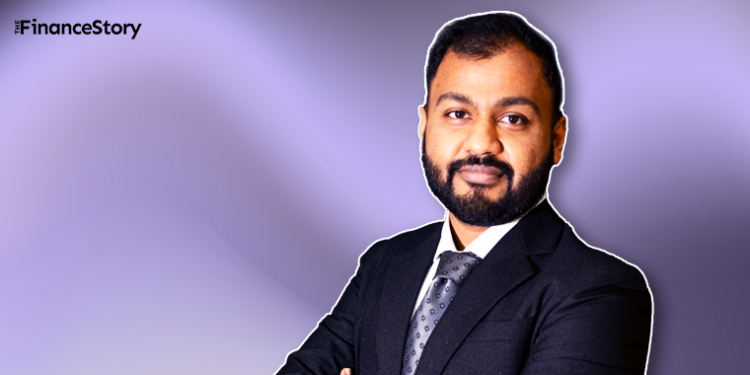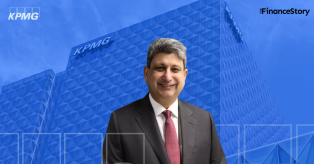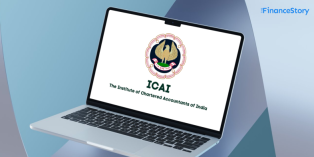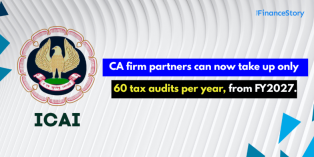- Hi, I am Hanish S. a Chartered Accountant of India and partner at HSKA & Associates.
- I fell in love with Indirect Taxation (IDT) during my articleship period. And there was no looking back.
- Running a sole proprietorship firm sure has its advantages, and I ran my own for 7 whole years.
- But when GST was introduced in 2017, I knew it was time for me to get other like-minded CAs on board.
Back Story
Though I hail from Bangalore, the Tech capital of India, I was inclined toward Accounts and Math. The commerce stream seemed like the perfect way to go.
Fast forward to 2001 while pursuing B.Com. a friend suggested “Why don’t you opt for an MBA? That’s the dream of most commerce students.”
The idea appealed to me but again I could appear for the MBA entrance exam (aka CAT) only in the last year of my graduation.
Then again somebody chimed in, “Instead of wasting two years just doing your B.Com, pursue Chartered Accountancy along with it!”
And just like that I proceeded with my CA journey and qualified as a CA in 2008.
Sole Proprietorship firm… specializing in Indirect Taxation
During my articles, I was assigned to the Indirect Tax Practice. This was in 2005 or so when very few interns wanted to explore indirect taxation.
But for me… I knew this was a field I would like to specialize in.
Moving on, I started my practice in 2010. There were very few firms who were focusing only on indirect taxes, maybe one or two were in Bangalore. I saw the opportunity and decided to focus on providing indirect tax-related services.
Sadly, I could not find the right mix of people who would want to be with me and do only indirect tax-related work.
I decided to start a Sole proprietorship firm.
I had a very good mentor Mr. Chandrashekhar Shetty who was of great help. The moment I told him that I was about to start something of my own, without hesitation he mentioned, “I have a big office, please pick an area anywhere in my office and set up your desk.”
So my rental cost was taken care of.
Now coming to the initial investment; I started with an INR 30000 Dell laptop.
I was able to reach a break-even point in my first assignment itself however the big break took a while… a long 6-9 months. My first big client was a leading real estate company, that believed in my firm.
I didn’t have any manpower at the beginning therefore had to do everything by myself, such as setting up the processes and reaching out to clients. So yes my fixed cost was zero!
It was only in the third or fourth year, that the number of clients started increasing, the team started expanding, and I rented office space.
A not so easy but it was a good start.
Moving from sole proprietorship to partnership firm
Running a sole proprietorship firm sure has its advantages, but when GST was introduced in 2017, the disadvantages popped up.
(Goods and Services Tax is an indirect tax used in India on the supply of goods and services.)
For instance,
- If I were to go on a holiday or I was unwell, the client would not have anyone else to call up and communicate their concerns.
- I was not able to reach out to big clients as I didn’t have a diverse team.
That’s when my mentor CA Jatin Christopher convinced me that I should focus on building an exclusive indirect tax firm.
In 2018 I partnered with two of my very good friends and focused solely on GST- related work. Our profiles complemented each other’s well.
We were passionate about IDT and that common goal of working exclusively in IDT led to the formation of HSKA and Associates
When we started the firm together we had long chats and lengthy meetings on the working of the firm, sharing of the existing work, managing the new work that may come our way, etc.
Now if I have something to discuss or get an opinion on I to know that I have my Partners! It has become simpler for me to look at certain matters from a different point of view.
Journey and challenges from the day of our inception
2013-2015: An interesting period
In 2013, I started getting new clients but did not have a team to handle the work. I had to manage client deliverables, pitch for new clients, and also handle office admin work.
Growth – Got new clients, and did some interesting work, including experimenting with work that I had never done earlier
Failure – Was unable to retain employees. There have been times when the salary was credited to employees in the first week of the next month, and they did not report to work after that. Also, cases, where offer letters were issued to employees but did not turn up on the joining date. Lost a few time-sensitive assignments due to this.
Success – Got a data entry job with a big multinational company that required us to contact the vendors of clients and educate them about the errors committed by the vendors while raising invoices – Wrong Registration Number, Wrong Rate of tax, etc. This was a loss assignment for us since the cost of resources was higher than the fee which I had agreed.
However, we got in touch with one of the vendors of the client who started contacting us for every small query related to service tax / VAT. He gave us a small assignment for Rs 5,000. Slowly and steadily we started more and more work.
The Bangalore Tax Head introduced us to his Delhi counterpart and we got an all-India contract. That Rs 5,000 billing turned into a big fat billing for us within 4 – 5 years and that company has since got listed with the stock exchanges and we continue to handle some interesting assignments for them
During this period, I had around 4 employees and things were looking challenging, but I was enjoying the work.
2016 -2017
By 2016, I had gained quite a few clients, now the challenge was to retain them.
Slowly and steadily we started receiving more and more assignments. I hired a few resources at a high cost so that they take care of the entire work.
I reduced my involvement in execution and spent most of my time researching GST and presenting the same to clients and Chartered Accountants.
2018: Finding the right partners
Sandesh (now a Partner at HSKA and Associates) was an Indirect Tax Head at one of the leading CA Firms in Bangalore and Annapurna was a consultant at another very reputed CA Firm in Bangalore.
Sandesh and I had already worked on a few GST assignments before partnering. We were also part of a study group.
Annapurna was an authority on State VAT matters and I had an opportunity to interact with her on issues being faced by clients on the same.
We became Partners in 2018.
2019 – 2022: After we formed this Partnership Firm, we have been able to approach more clients, handle larger client accounts, and retain more employees.
Now one of the partners can take charge of an assignment if I am preoccupied, and vice versa.
Intention of expanding
Yes, we would want to partner with foreign firms.
Almost all countries today have integrated VAT or GST in some form or the other. Some aspects here and there would be different but other than that it is the same principle; You pay the taxes and in return get the input tax credit.
So of course we would love to look at the broader market of indirect taxes. But first, we want to grow in India and then spread out to other countries.
Let’s take UAE for instance.
When VAT was introduced in the UAE, we implemented it for three of the companies there. But soon we realized that we will have to partner with somebody in that location.
The way they interact with clients, and negotiate on the fees and the output are completely different when compared to India.
In that case, either associating with foreign firms or outsourcing is the way to work internationally, but that is not something that can be ruled out for our firm.
Closing…
Should you go for a Sole proprietorship or Partnership firm? There is no right or wrong. It all depends on what one wants to do and achieve. As a sole proprietor, you are your own boss! However, by having Partners you will earn more confidence from your clients. Attract better talent of people and the admin work gets divided.
Planning to start your own? If you have worked in the industry for one or two years, then whatever you’ve saved from your salary, is more than sufficient to start a practice.
Just because you want to acquire a new client, don’t quote a lower fee. You might repent it later. There is no shame in following up with the clients for your fees. If a client can follow up with his work, you can always follow up with them for the money they owe you. It’s very important.
Don’t underestimate your value.
And last but not least, there is no substitution for upgrading yourself. You have to read constantly. You cannot just read the headlines and understand what a case is all about. You will have to get to the Fine Print.














